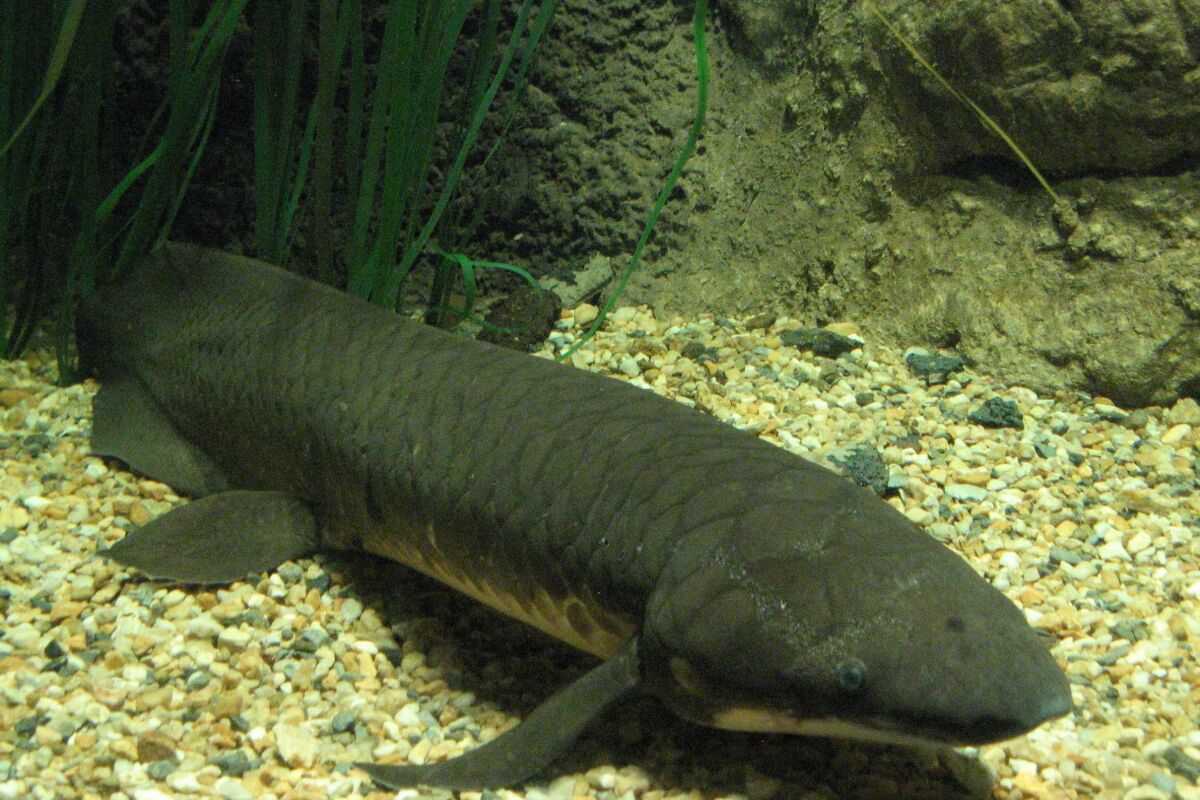
Just why as we go back in time do we find larger genomes at all. It really looks like material is edited out as we progress toward some form of ideal. All this is in complete opposition to evolutionary expectations.
Perhaps such progress is made by combining components. How odd unless this is planned forward as we do suspect. The useful material is added to the gene reducing excess apparent complexity.
We do have one less chromosome than our immediate primate cousins.
"Living fossil" genome sequence reveals clues to evolution of life on land
January 26, 2021
European scientists have sequenced the complete genome of the Australian lungfish
VIEW 1 IMAGES
https://newatlas.com/biology/australian-lungfish-genome-sequenced-living-fossil/
Genome sequencing can teach us a huge amount about a species, and now scientists have completed the sequence for one of the weirdest and most intriguing animals in the world. The Australian lungfish is a “living fossil” from the time our ancestors first crawled out of the oceans, and its genome reveals that it’s our closest living fish relative and it has the largest genome of any animal sequenced so far.
The Australian lungfish is one of six lungfish species in the world, and it’s a bizarre creature. As the name suggests, it has a lung in its back that lets it breathe air, and it can “walk” along the riverbed like a salamander thanks to its fleshy, well-formed pectoral and pelvic fins.
With those two features working together, the Australian lungfish likes to crawl out of its home in rivers and freshwater pools and venture onto dry land. It’s not truly amphibious, but it has been known to live out of water for several days at a time – provided its skin doesn’t dry out too much.
That’s a throwback to one of the most important steps in evolutionary history, when the first animals crawled out of the oceans onto dry land during the Devonian period, some 420 million years ago. The Australian lungfish is one of the closest living relatives to those pioneering sea creatures, and because it’s remained largely unchanged by evolution for well over 100 million years, its genome potentially preserves insights into that key period.
So scientists in Europe set out to sequence that complete genome. This has already been done for many animals, plants and microbes of interest, including humans, mice, worms, mosquitoes, Tasmanian tigers, sharks, apples, tomatoes, wheat, barley, and the Black Death bacteria.
It turns out that the Australian lungfish has the largest genome of any animal ever sequenced, containing around 43 billion DNA nucleotides. That’s 14 times bigger than the human genome, and quite a leap above the previous record holder, the axolotl, on 32 billion.
The team found that the staggering size mostly came down to repetition. About 90 percent of the lungfish genome was made up of repeating sequences, which can have variable positions in the genome. In this respect, the team says the lungfish actually more closely resembles land vertebrates than other fish.
With the genome fully sequenced, the researchers were able to confirm that the lungfish is the closest living fish relative of all tetrapods, the absolutely gigantic group of land animals containing everything with the familiar body structure of four limbs coming off a central trunk. That means reptiles, birds, and mammals, including humans.
In fact, we’re more similar than you might think. The genes that control embryonic development of the lungfish’s lungs are the same ones as in humans, which show that the evolution in both species can be traced to the same origin. The development of the bones in their fins is also controlled by the same genes as those of our hands.
The team also discovered some genomic pre-adaptions to life on the land. The lungfish genome had expanded in areas linked to air breathing, limb development, reproduction, and the ability to smell the air.
All up, sequencing the genome of the Australian lungfish will help improve our understanding of one of the most important transitions in evolutionary history.
The research was published in the journal Nature.
Source: University of Konstanz
No comments:
Post a Comment